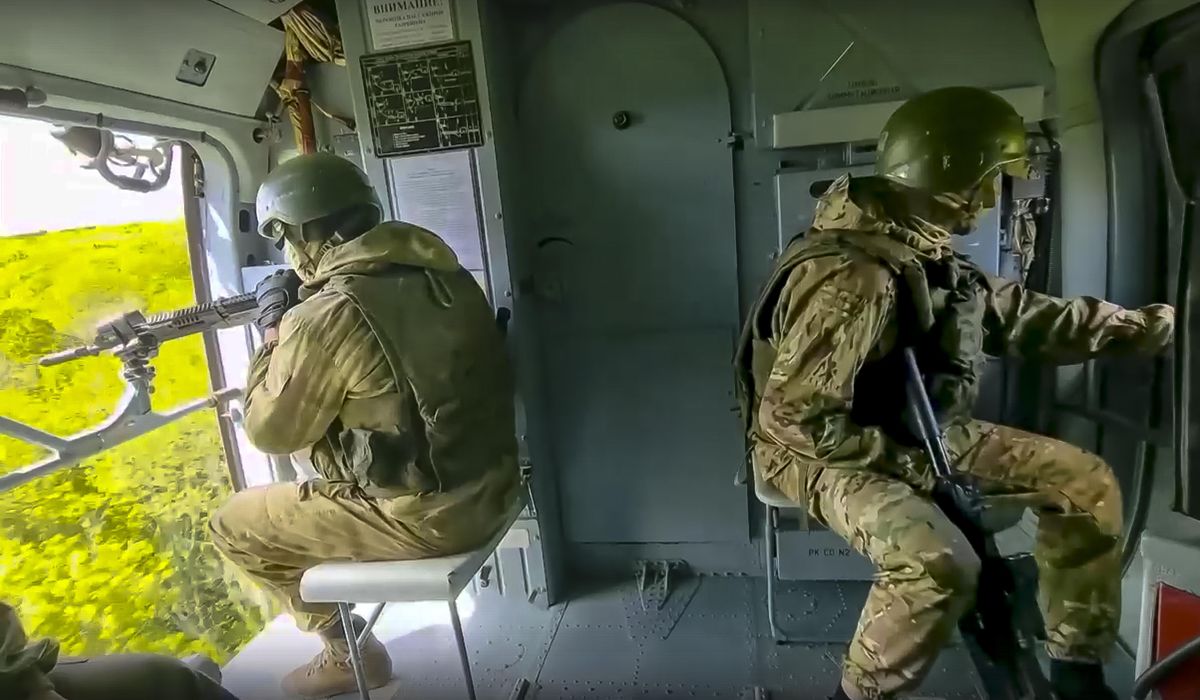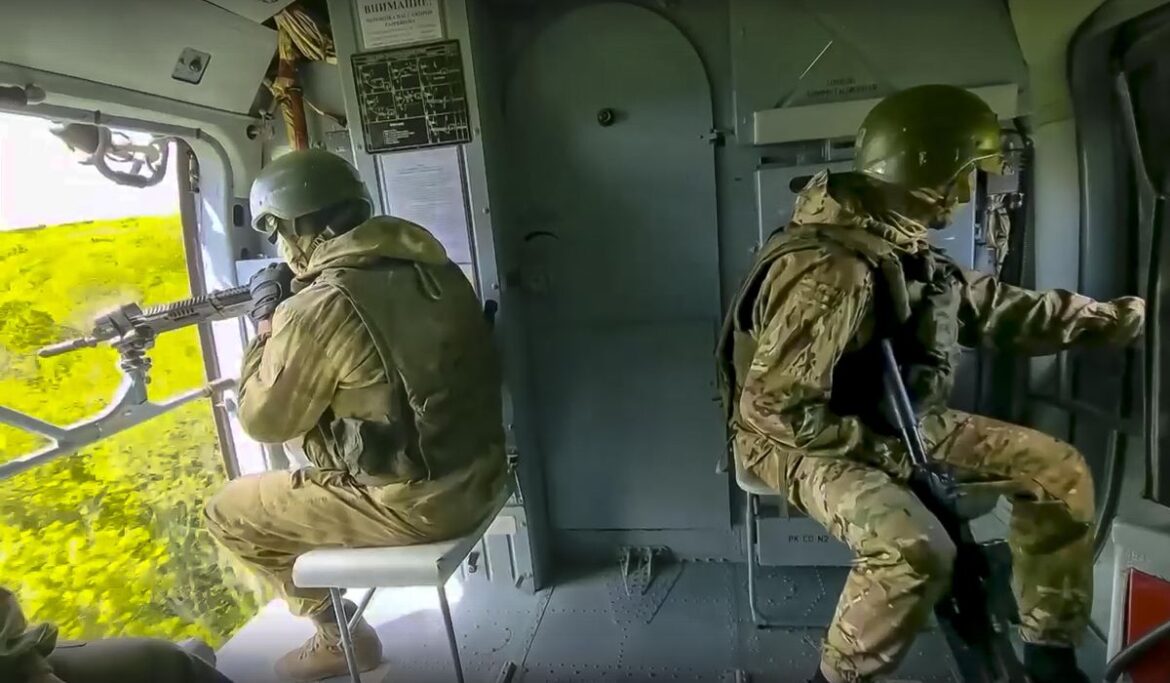
On the ground, Russian and Ukrainian troops appear poised for a war of attrition that could drag on for years.
But in the air, Moscow may have already lost.
Virtually all military observers expected Russia to dominate the Ukrainian skies within days of its Feb. 24 invasion, given its massive numerical edge in fighter jets, attack helicopters and a host of other metrics. Instead, Ukrainian airspace remains contested, thanks largely to a steady stream of anti-aircraft weapons from the U.S. and Europe and major strategic blunders from Russian commanders.
Airpower strategists and military insiders say that Russia’s failure to achieve air superiority over Ukraine has been one of the biggest shocks of the war so far and one that has contributed greatly to Moscow’s broader battlefield failures. Russia’s missteps in the air, they say, helped doom its ground assault on Kyiv in the early days of fighting. More recently, the lack of air dominance allowed a Ukrainian counteroffensive to push Russian ground troops out of Kharkiv and other key cities.
And there’s little sign things will turn around soon.
“I would say Russia has almost no chance to establish air superiority over the next several months,” one U.S. airpower strategist told The Washington Times recently, offering a blunt assessment that highlights how Russian troops have failed spectacularly in their push to use air superiority to pave the way for ground maneuvers.
‘They don’t know how’
Gen. James Hecker, the commander of U.S. air forces in Europe and Africa, said this month that Ukrainian air defenses have shot down at least 55 Russian warplanes since the beginning of the conflict. That’s at least 7% of Russia’s total fighter aircraft capacity, according to figures from the online clearinghouse Globalfirepower.com.
Perhaps more importantly, Russia’s failure to secure the skies has allowed Ukrainian artillery and attack drones to establish forward positions and wreak havoc on Russian ground forces and vehicles. In both the Kyiv and Kharkiv battles, Russian air dominance would surely have made a major difference, by both protecting its own troops and giving its air force the freedom to rain destruction down on Ukrainian positions.
Specialists say Russia is not plagued by a lack of equipment. The Russian invading force has both the fighter planes and defensive systems — such as electronic warfare capabilities that could jam Ukrainian drones long before they have the chance to strike — necessary to dominate the air.
But the Russian military seems to have much deeper problems, including an apparent failure to anticipate just how valuable control of the skies would be.
“Many expected the Russians to execute the way the U.S. and our allies would, with cogent air doctrine, based on an offensive spirit and a comprehensive understanding of the importance of air superiority,” said retired U.S. Air Force Gen. David Deptula. “In fact, they don’t have the same air doctrine as the West, they don’t have the same level of training, they suffer from gross incompetence, and poor leadership that focuses only on how air can support ground operations.”
Gen. Deptula planned the first Gulf War air campaign and the initial air attacks in Afghanistan in response to the Sept. 11, 2001, terrorist attacks.
“The Russians have never used airpower in pursuit of strategic objectives in their entire history, so they don’t know how to best exploit airpower,” said Gen. Deptula, now the dean of the Mitchell Institute for Aerospace Studies.
Pentagon officials describe Ukrainian airspace as “contested.” Other observers privately describe the air war as a “stalemate” between the two sides, with neither achieving control but being effective enough to deny their foe from achieving it either. Given the correlation of forces, however, even a draw represents a big win for Kyiv.
Writing in Defense News last week, Air Force Col. Maximilian Bremer, director of the Special Programs Division at Air Mobility Command and Kelly Grieco, a senior fellow with the Stimson Center and an adjunct associate professor of security studies at Georgetown, argued Ukrainian forces did not need to dominate the skies over the battlefields of the Donbas, so long as they could effectively prevent Russian air dominance as well.
“By adopting an air denial strategy — that is, maintaining an air defense in being to keep Russia’s manned aircraft at bay and under threat — Kyiv thwarted Russia’s ability to not only ascertain the disposition of Ukrainian forces but also to respond rapidly to events once it became obvious where the counterattacks were taking place,” they wrote. “Quite simply, air denial — not the traditional concept of air superiority — was a prerequisite for Ukraine’s battlefield success.”
In some cases, Russian jets even appear reluctant to enter Ukrainian airspace at all.
“Clearly the Russians have used bombers and fighters, but a lot of what they’ve done is they stay in Russian airspace and they fire into Ukraine with long-range missiles,” the U.S. airpower strategist told The Times. “There is a sense they’re avoiding being shot at by staying in their friendly territory and using their weapons capabilities” at longer range.
“I am surprised at that,” the strategist said. “Certainly when you just look at the numbers and capabilities, Russia … should be able to use the air for their purposes. And they don’t seem to be able to.”
In Ukraine’s successful Kharkiv counteroffensive, Col. Bremer and Ms. Grieco noted, “Ukrainian tanks and military vehicles rumbling down highways and across open fields in broad daylight should have made easy work for the Russian Air Force. But Ukraine’s air denial strategy made Russian pilots wary of flying into Ukrainian airspace at all, much less loitering and hunting for targets on their own.”
Leveling the playing field
Indeed, the raw numbers suggest a massive mismatch. The Russian air force boasts 4,173 total aircraft compared to Ukraine’s 318, according to Globalfirepower.com figures. From transport aircraft to fighter jets to attack helicopters, Russia’s air capabilities dwarf those of Ukraine.
But Ukraine has several key advantages. Ukrainian troops have proven to be remarkably effective at quickly learning to use U.S.-made anti-aircraft weaponry with deadly precision. In addition to anti-aircraft artillery, Ukrainian drone strikes have crippled Russia’s own air defensive systems, though there is some evidence Russia has stopped the bleeding on that front by bringing greater electronic warfare capabilities into the theater.
Still, Russian military commanders seem ill-equipped to take out Ukraine’s anti-air assets before they can strike. Military insiders described a Russian war machine that has failed repeatedly to find those assets and hit them in a reasonable time frame.
“It takes them hours to days. And that’s way too long,” the U.S. airpower strategist said. “The ability to shoot and maneuver is keeping these Ukrainian forces alive. And until Russia can do something about that. … I don’t see any major campaign that gets them air superiority.”
On the other hand, Ukrainian forces have worked closely with U.S. airpower officials, both in terms of strategy and the nuts-and-bolts work of learning how to operate the most sophisticated offensive weapons and anti-aircraft defenses. For example, Ukrainian air force personnel have worked closely with the California National Guard for three decades, dating back to the breakup of the Soviet Union in the early 90s.
“The Ukrainian Air Force has had an indoctrination on Western air operations and strategy, along with commensurate training on tactics, techniques, and procedures to accomplish those operational and strategic objectives, by years of partnership with an American Air Force superiority unit flying F-15s from the California Air National Guard,” Gen. Deptula said.
By contrast, Gen. Deptula said, “the Russian military is optimized to slug it out on the ground.”
“By fighting from the air, Ukraine realizes that it can turn that advantage around,” he said.
To some extent, Ukraine’s successes in the air cannot be quantified. Military insiders say Russia’s inability to secure Ukrainian airspace has surely had a measurable impact on the morale of its ground troops, who were likely assured by their leaders that they would not come under fire from the skies.
“Armies that enjoy air superiority are generally very effective armies,” the U.S. airpower strategist said. “They generally have decent-to-high morale and they’re able to move with confidence knowing that they’re not going to get picked off by bombs or artillery falling from the air. And the opposite is true as well.”
“I would imagine the morale on the front lines of the Russian forces, especially in the north on the front lines, is likely bottomed out,” the strategist said.





